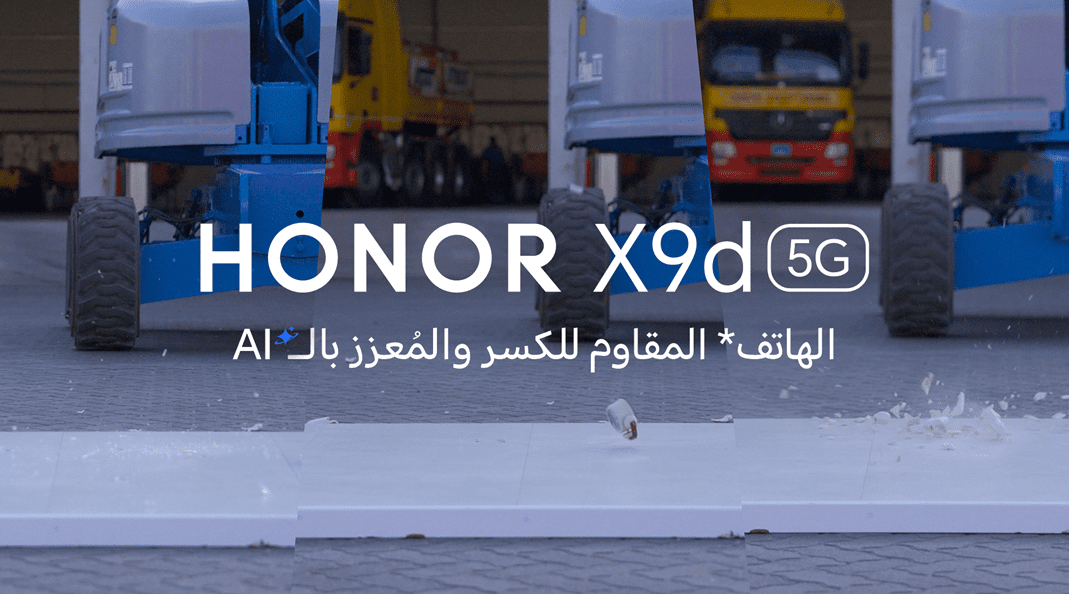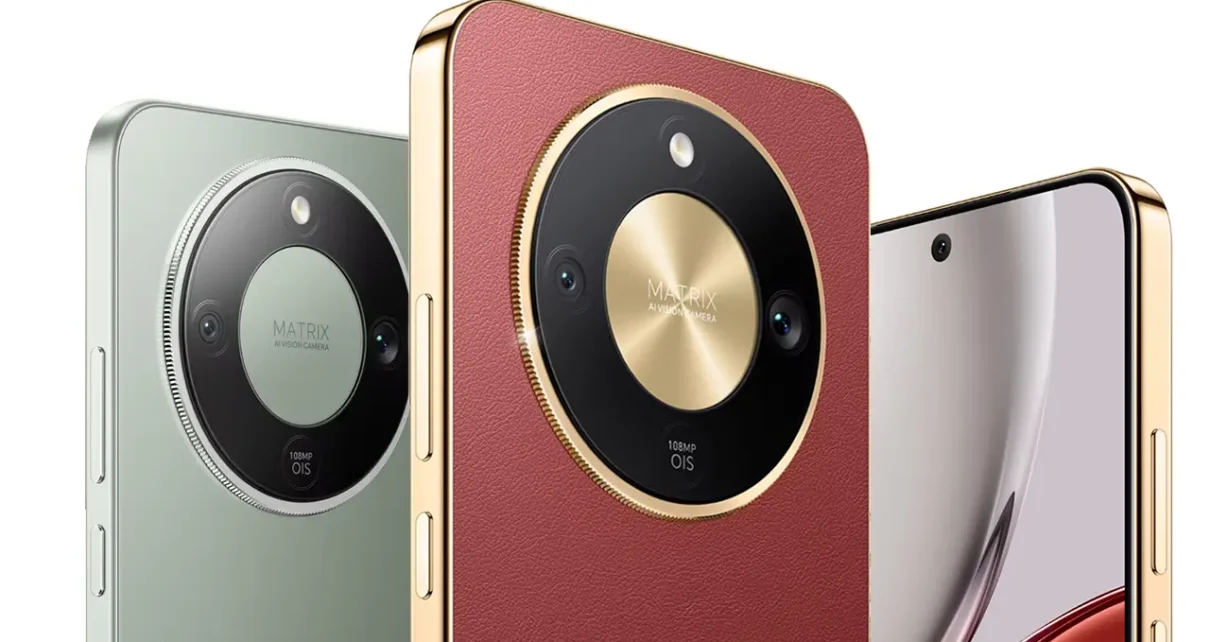HONOR X9d
Durability Meets True Innovation
Phones as Extensions of Life… and Their Frustrating Fragility
In a world where innovation accelerates relentlessly, our smartphones have become more than tools. They are extensions of our minds — vaults for our most private memories, the conduits of our conversations, wallets and cameras, and the little screens through which we live much of our daily lives. We entrust them with things we might not share with even our closest friends; we rely on them for navigation, communication, health monitoring, financial transactions, and countless routines woven into our days.
Yet despite this deep reliance, there is a painful contradiction: phones are fragile. One careless moment — a slip from a coffee table, an accidental fall from a pocket, a child’s curious grab — and that trusted companion can become a web of cracks. Cracked screens, dead pixels, intermittent touch response, charging failures… followed by anxiety over recoverability of data, frustration, repair or replacement costs, and the strange, pervasive sense of personal failure.
For millions worldwide, this worry is not theoretical: it is daily, persistent, and debilitating. Parents feel it whenever they hand a phone to a child. Construction workers live with it at dusty sites. Outdoor lovers hesitate before bringing a handset on an adventure. Office professionals carry it between meetings. Students tuck it into backpacks. It is a low-level stress that colors our relationship with what should be an essential, trusted device.
For decades, the smartphone industry has responded to this anxiety in predictable ways.
Manufacturers kept designing ever-faster processors, cameras that capture breathtaking detail, and displays that dazzle the eye. They wrapped innovation in layer after layer of technical brilliance — each generation more advanced than the one before.
Yet in doing so, they overlooked the most human truth of all: these devices still break — far too easily, far too often. And when they do, they cost too much to repair or replace. An entire ecosystem has quietly grown around this fragility. Case makers thrive on our worry. Insurance providers profit from our fear. Trade-in programs depend on our devices aging into obsolescence.
It’s as if the entire economic model of the smartphone industry has been built on our unease — on that lingering tension that a single careless moment could shatter not just a screen, but our access to connection, productivity, and peace of mind.
But what if that story — the story we’ve accepted for nearly two decades — could finally be rewritten?
How the Industry Responded — and Why the Problem Persisted
For decades, the smartphone industry answered that anxiety in predictable ways: more powerful processors, higher-resolution cameras, sharper screens. Those are worthy developments. But in the race to out-spec one another, the fundamental vulnerability of devices was treated as secondary — a problem for cases, insurance, and trade-in programs to solve. In effect, the ecosystem that grew around smartphones — protective cases, insurance, trade platforms — benefited from, and profited off, the persistent fragility.
What if that narrative could change? What if a manufacturer put durability at the core of design — not as a checkbox, but as the foundation upon which other innovations are built?

The Moment That Changed the Conversation: Guinness-Tested in September 2025
In September 2025, HONOR put this philosophy to the test and produced an unmistakable result: the HONOR X9d — engineered from the ground up for resilience — survived a 6.133-meter (over 20-foot) drop in a controlled experiment verified by Guinness World Records. This was not marketing theater or a simulated claim; it was a hard physical reality validated by an independent third party whose credibility rests on scientific rigor.
This achievement is not merely a sensational headline. It is the culmination of years of disciplined engineering, a corporate commitment to solve a problem affecting millions, and a philosophical stance that places user protection above short-term profit.

A Different Story: Durability, Privacy, and Real User Value
HONOR didn’t only produce another handset. It reimagined what a smartphone can be when durability, privacy, and real user value are organizing principles rather than afterthoughts. Market challenges — supply disruptions, fierce competition, skepticism about an Asian upstart — became opportunities for differentiation. HONOR refused industry orthodoxy and created something genuinely different.
For anyone weary of the upgrade treadmill, exhausted by premium costs for fragile devices, skeptical of empty privacy promises, HONOR X9d is more than a phone: it’s a declaration that a different kind of device is possible. It demonstrates that technology can evolve without planned obsolescence, without compromising privacy, and without pricing durable excellence out of reach.
This piece does not push you to buy X9d. It invites you to understand a different manufacturing philosophy and to reassess how you relate to technology. Whether you choose HONOR or not, appreciating the X9d approach may change how you evaluate devices — demanding sturdiness, better privacy, and a refusal to treat breakage as inevitable.
Welcome to unbreakable value.
How HONOR X9d Transforms Daily Life — Practical Use Cases
For Parents
The anxiety of handing a phone to a child for learning or play is greatly reduced. Durable hardware offers confidence; robust parental and privacy controls add peace of mind — age-appropriate limits, app monitoring, safe settings — all without invasive tracking.
For Professionals
On job sites and in field meetings, bulky protective cases are not required. The X9d preserves both professional aesthetics and rugged functionality. Productivity features — contextual task management, smart meeting preparation, focus modes — let the device manage workflows instead of the user constantly adjusting the device.
For Creators
Durability plus computational power equals creative freedom. Shoot in rain, sun, or near water without hesitating. AI-enhanced camera systems translate creative intent into accurate pixels.
For Adventurers
When gear can fail at crucial moments, X9d reduces that risk. Wide operating temperature range, water resistance, and structural toughness mean the phone won’t be the weak link in high-risk activities.
For Everyday Users
Most people are tired of living cautiously around their phones. The X9d breaks this cycle: less anxiety, fewer repairs, longer life — a device that enables rather than restricts daily life.
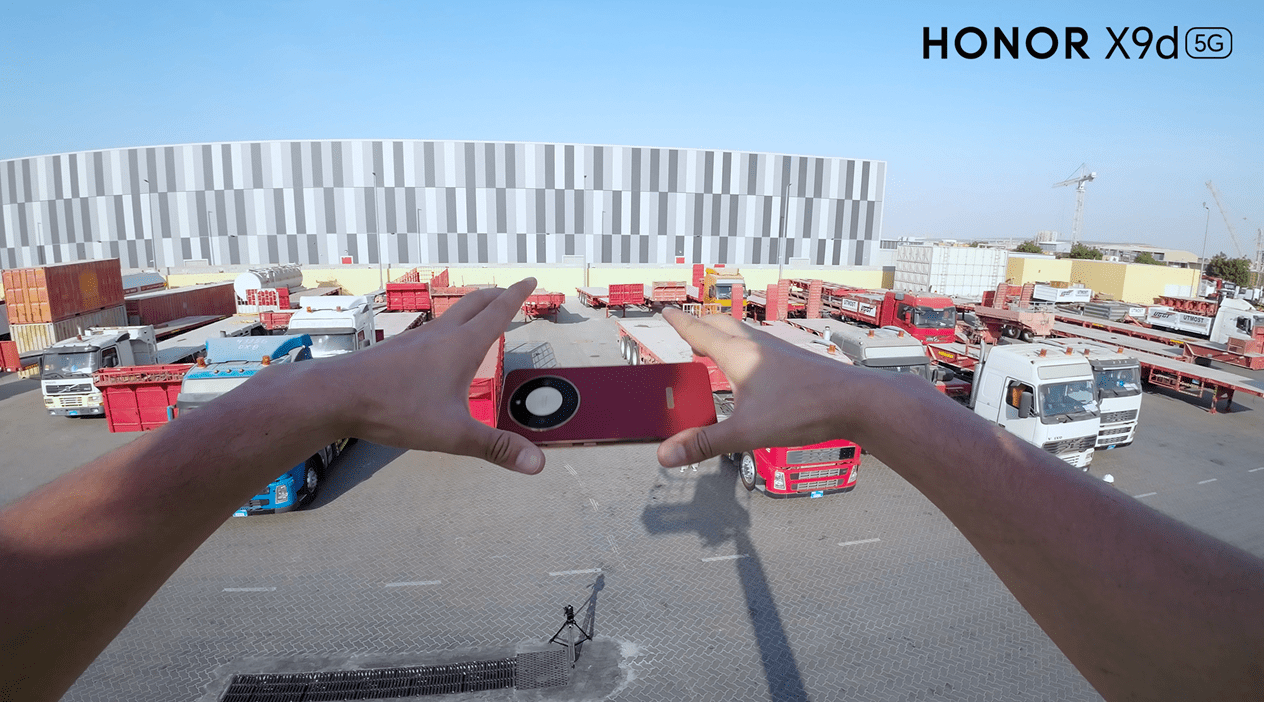
Tackling Modern Challenges — HONOR’s Practical Solutions
Challenge 1 — Digital fatigue and attention fragmentation
Problem: Hundreds of notifications fragment attention daily.
HONOR solution: Smart notification curation, contextual focus modes, and awareness-driven settings reduce noise while preserving important information. The device becomes an antidote to fatigue, not an amplifier.
Challenge 2 — Weak data privacy
Problem: High-profile breaches and opaque data practices erode trust.
HONOR solution: Hardware-level encryption, a transparent privacy dashboard, and on-device processing for sensitive tasks ensure user data remains under user control.
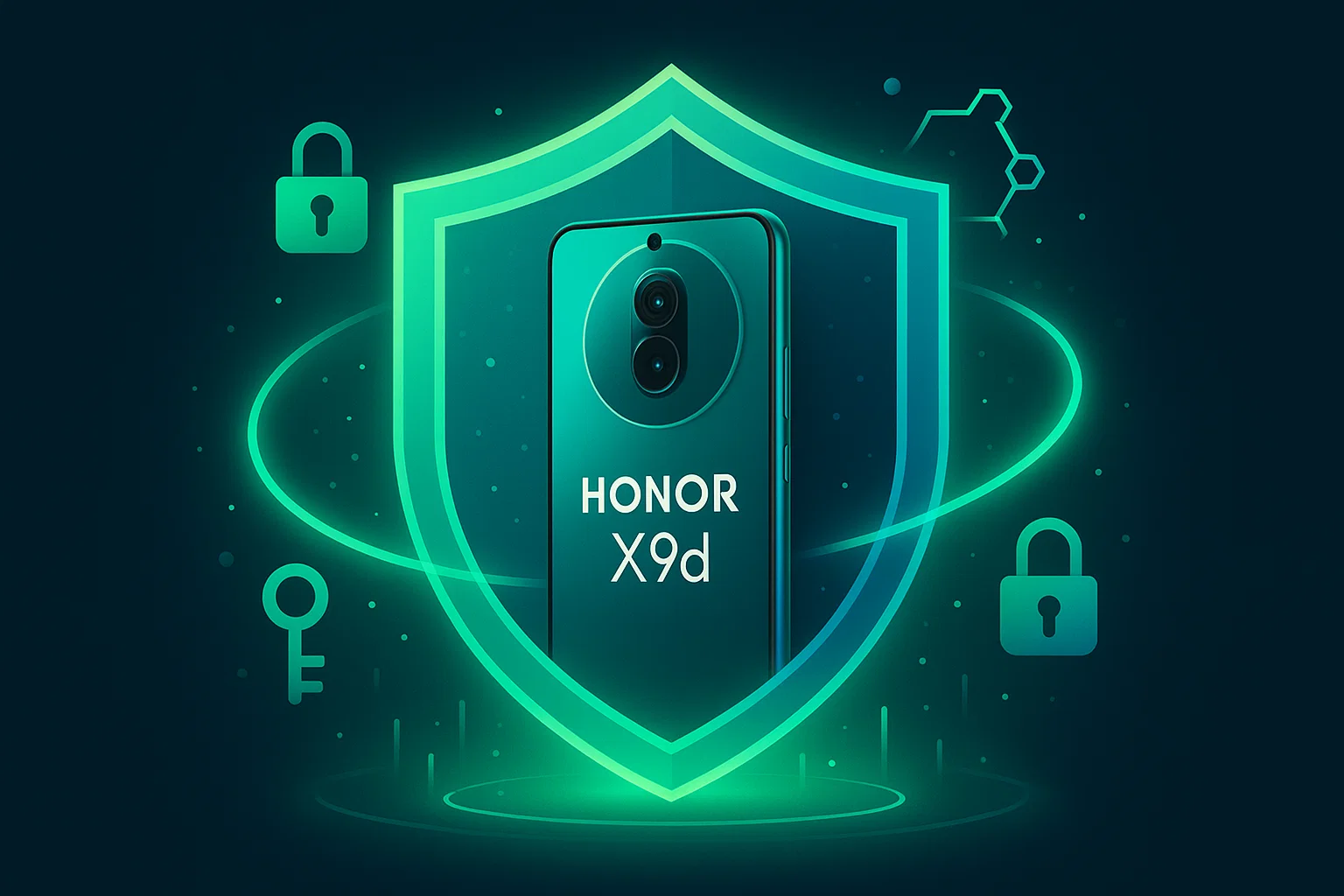
Challenge 3 — Upgrade fatigue & e-waste
Problem: Devices becoming obsolete in two years produce environmental and financial costs.
HONOR solution: Durability-first design keeps devices functional and relevant for longer, reducing replacement cycles and environmental impact.
Challenge 4 — Mental health erosion
Problem: Smartphone overuse links to anxiety, poor sleep, and depression.
HONOR solution: Contextual modes, proactive activity detection, and health-aware prompts help users preserve balance rather than fuel compulsive behavior.
Challenge 5 — Digital divide
Problem: Premium technologies remain inaccessible to billions.
HONOR solution: Scientific-grade durability at approachable price points — making reliable technology available to a wider population.
HONOR’s Journey: Turning Problems into Competitive Advantages
Market entry challenge
After splitting from Huawei, HONOR faced skepticism about independence and distribution. Instead of retreating, HONOR found an underserved niche: consumers who value reliability, fair pricing, and genuine problem-solving. Transparency and community engagement created loyalty that large marketing budgets alone cannot buy.
Supply-chain resilience
COVID exposed fragility. HONOR invested in diversified suppliers and adaptive manufacturing rather than over-optimizing for cheapest single-source efficiency. That investment paid off when disruptions hit others.
Innovation vs. giants
Apple and Samsung invest billions in R&D. HONOR’s reply was focus: rather than scatter resources across countless initiatives, it zeroed in on durability as a defining feature. Focused innovation can outcompete broad but shallow attempts.
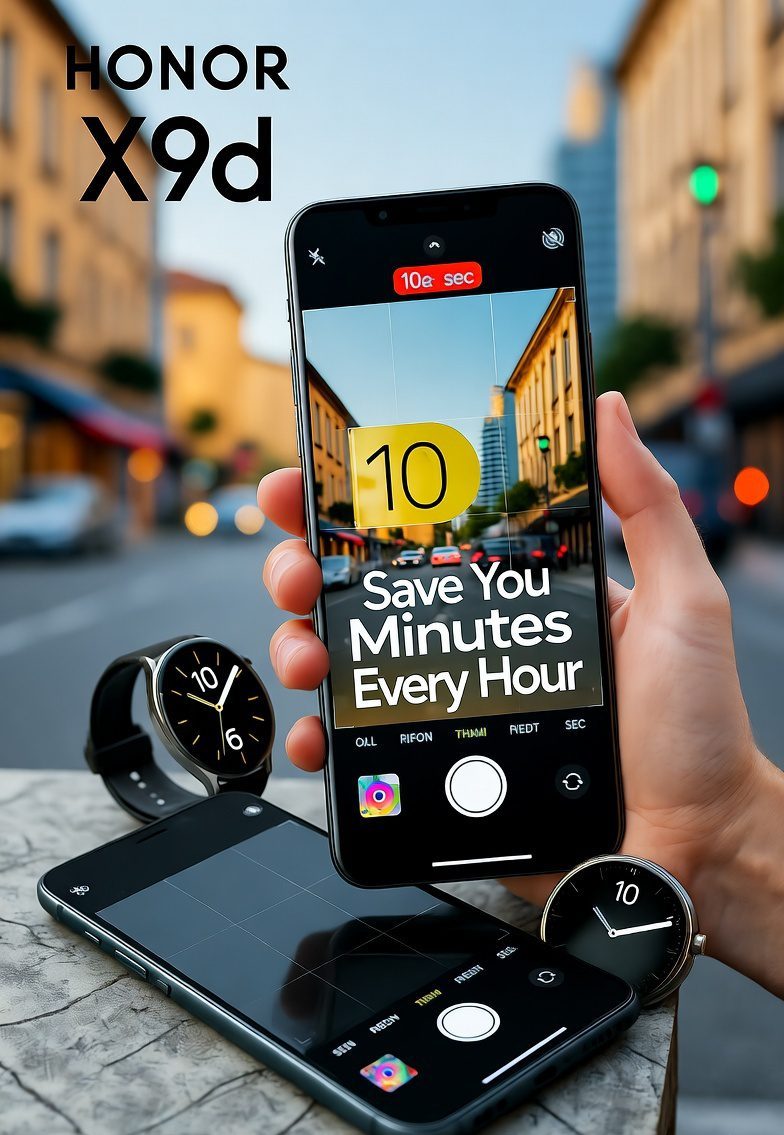
Profitability question
Durability can reduce repeat purchases. HONOR shifted its model to lifetime customer value: a four-year retained user is more likely to upgrade within the HONOR ecosystem, recommend the brand, and purchase accessories and services — producing deeper, sustainable revenue.
Perception hurdle
Bias against Chinese brands in some Western markets is real. HONOR didn’t defend; it verified: third-party certifications (SGS, Guinness, independent reviews) turned doubt into credibility.
Retention challenge
Phones have become commodities. HONOR answered by building devices worthy of loyalty: reliable hardware, respected privacy, and fair pricing.

COMPETITOR COMPARISON TABLE (HTML-Ready)
Full Comparison: HONOR X9d vs. Market Leaders
| Feature Category | HONOR X9d | iPhone 15 Pro Max | Galaxy S24 Ultra | Pixel 9 Pro | OnePlus 13 |
|---|---|---|---|---|---|
| Drop Test Verification | ✅ Guinness 6.133m | ⚠️ Marketing claims | ⚠️ IP69K only | ⚠️ IP68 only | ⚠️ IP69K only |
| Temperature Range | -30°C to 55°C | 0°C to 35°C | 0°C to 40°C | 0°C to 45°C | 0°C to 45°C |
| Water Resistance | IP69K (1.5m/30min) | IP68 (6m/30min) | IP68 (1.5m/30min) | IP68 (8m/30min) | IP69K (2m/30min) |
| Key Certifications | SGS Triple-Resistant + 5-Star | Partial MIL-SPEC | Limited IP69K | Basic IP68 | IP69K |
| Processor | Snapdragon 8 Gen 3 Leader | A18 Pro | Snapdragon 8 Gen 3 | Google Tensor 4 | Snapdragon 8 Gen 3 |
| RAM | 12-16GB | 8GB | 12-16GB | 16GB | 12-16GB |
| Storage | Up to 1TB | Up to 2TB | Up to 1TB | Up to 256GB | Up to 512GB |
| Display | 120Hz AMOLED + AI Rain Touch | 120Hz Retina ProMotion | 120Hz Dynamic AMOLED | 120Hz OLED | 120Hz AMOLED |
| Main Camera | 50MP + AI Enhancement | 48MP Computational | 200MP | 42MP | 50MP |
| Battery | 5910mAh | 4685mAh | 5000mAh | 4700mAh | 6000mAh |
| Charging | 100W Wired, 80W Wireless | 45W (adapter needed) | 45W Wired, 15W Wireless | 30W Wired, 23W Wireless | 100W Wired, 50W Wireless |
| Privacy | Hardware Encryption | iCloud + Biometric | Samsung Knox | Tensor Security | ColorOS Privacy |
| Price Range | $599-$749 | $1,099-$1,199 | $1,299-$1,499 | $999-$1,099 | $799-$999 |
| Value Proposition | Durability + Innovation + Access | Ecosystem + Brand | Max Specs + Display | AI Integration | Speed + Performance |
Key Insights:
HONOR X9d has 40-50% price advantage over iPhone/Samsung equivalents
Only device with Guinness-verified drop test certification
Widest temperature operating range (-30°C to 55°C)
Largest battery capacity in comparison set
Hardware encryption matches Apple; exceeds Google transparency
Competitive Edge: What Makes HONOR X9d Stand Out
Durability-first philosophy — not an add-on.
Third-party verification — not just manufacturer claims.
Affordable accessibility — science-backed durability without premium-only pricing.
Real-world testing — asphalt, gravel, marble — surfaces that matter.
Verifiable privacy — hardware encryption, on-device AI, transparent permission logs.
Problem-driven innovation — AI Rain Touch, AI Glove Touch, contextual focus modes solving everyday pain points.

The Broader Mission: Why HONOR Built X9d
HONOR’s principles:
-
Useful — technology should empower human flourishing, not exploit.
-
Accessible — premium innovation should be available broadly.
-
Responsible — reduce environmental impact through longevity and recycled materials.
-
Human-centered — devices adapt to people, not vice versa; AI runs unobtrusively to support life.
-
Boundless innovation — rethink conventional design assumptions to solve real human problems.
X9d embodies this mission. HONOR’s ambitions extend across tablets, wearables, and IoT — a coherent ecosystem designed to serve people.
FAQ: Questions That Matter
Product and Durability
Q: How does the HONOR X9d’s 6.133-meter drop test compare to real-world durability?
A: Real-world durability is inherently probabilistic. A 6.133-meter drop is an extreme scenario that most users will never experience. However, HONOR’s engineering approach—six-layer structure, anti-drop technology, strategic reinforcement—means the device is also highly resilient to the common scenarios: 1-2 meter drops, impacts on rough surfaces, repeated minor shocks. The extreme test validates the engineering principles; real-world resilience is the everyday consequence.
Q: Will my HONOR X9d definitely survive a drop?
A: No device is indestructible. While the HONOR X9d has survived controlled drops from 6.133 meters, individual devices could be damaged under certain conditions—catastrophic impact angles, damage to previous shocks that weakened structure, or simply statistical outliers. However, the probability of device failure from typical use-case drops is dramatically lower than competitor devices.
Q: Does the durability engineering add significant weight or thickness?
A: HONOR engineered the X9d to weigh under 200 grams while delivering superior durability. This required innovation in materials science and design, but the result is a device that’s durability-focused yet maintains excellent usability. The thickness remains competitive with flagship devices.
Q: What about long-term durability? Will the device still be protected after two years?
A: While the protective materials remain effective, durability can be affected by normal wear—micro-scratches, material degradation, repeated impacts that individually don’t cause damage but collectively affect structure. HONOR’s engineering assumes normal wear patterns and remains protective throughout typical device lifecycles. However, a device used in extreme conditions (construction work, extreme sports) may degrade faster.
Privacy and Security
Q: How is the HONOR X9d’s privacy different from competitors?
A: The key difference is verification. While all manufacturers claim privacy, the HONOR X9d implements hardware-level encryption (difficult to fake), transparent permission controls (you can see exactly what apps access), and on-device processing (data doesn’t leave your phone). These are verifiable through observable device behavior, not just marketing claims.
Q: Can HONOR or third parties access my data?
A: HONOR’s architecture makes data access extraordinarily difficult. Your data is encrypted using keys stored in a secure enclave. Even if someone physically accessed the device or hacked the software, decryption without the proper credentials is mathematically impractical. Cloud backup is encrypted end-to-end—HONOR servers contain encrypted data they can’t decrypt.
Q: What about government requests for data?
A: HONOR would comply with lawful government requests. However, the technical architecture limits what they can provide. If data is encrypted and HONOR lacks decryption keys, they can’t decrypt it for government access. This is a feature, not a limitation—it means your data is protected even from HONOR if compromised.
Q: Is on-device processing slower than cloud processing?
A: Sometimes. Complex AI tasks may be faster in data centers with specialized hardware. However, HONOR optimizes on-device processing for acceptable speed while maximizing privacy. For most user-facing tasks—photo enhancement, voice recognition, translation—on-device processing is fast enough for practical use.
Technology and Features
Q: How does AI Heavy Rain Touch work?
A: The technology uses machine learning to distinguish between raindrops (which create false touches) and intentional finger contacts. The algorithm analyzes touch patterns, pressure signatures, and contextual data (is rain detected by sensors?) to filter noise while preserving responsiveness. It’s not perfect—heavy downpours can still cause issues—but it dramatically improves usability in rain.
Q: Does the phone work in extreme cold? How does -30°C operation work?
A: At extreme cold, battery chemistry slows (reducing output), display response time increases, and materials become brittle. HONOR’s engineering addresses these through: battery chemistry optimized for cold performance, display technologies that respond reliably at low temperatures, mechanical designs that accommodate material contraction, and software that monitors temperature and adjusts performance dynamically.
Q: Will the HONOR X9d last longer than competitor phones?
A: Durability extends device lifespan by reducing physical damage incidents. However, other factors also matter: battery degradation (the X9d has a large 5910mAh battery, which helps), software support (HONOR typically provides 3-4 years of major updates), and technological obsolescence (features become outdated regardless of device condition). The X9d’s durability advantage matters most if you’re the type of user who keeps devices for 3-5 years.
Practical Usage
Q: Is the HONOR X9d good for underwater photography?
A: Yes, specifically. The IP69K rating and underwater photography support up to 6 meters means you can capture underwater moments at snorkeling depths. However, the built-in camera isn’t optimized for underwater conditions the way specialized waterproof cameras are—lighting, color correction, and focus work differently underwater. You’ll get usable photos, but serious underwater photography requires specialized equipment.
Q: Can I use the HONOR X9d at high altitudes?
A: Yes. The device includes altitude adjustment algorithms that optimize performance. At high altitudes (above 2,500 meters), the thinner air reduces cooling efficiency. HONOR’s software monitors temperatures and adjusts processor performance to prevent thermal throttling. You’ll notice no practical difference in usage.
Q: How long does the battery last with heavy usage?
A: The 5910mAh battery provides 12-14 hours of moderate mixed usage, 8-10 hours of heavy usage (continuous video streaming, gaming), or 18-20+ hours of light usage (messaging, calls, occasional browsing). Real-world battery life depends heavily on usage patterns, display brightness, and signal strength.

Sustainability and Long-Term
Q: Is the HONOR X9d environmentally better than other phones?
A: Potentially, yes—if durability encourages extended ownership. A device kept for 4 years instead of 2 means half the replacement frequency, potentially reducing e-waste and manufacturing environmental impact. However, the manufacturing process itself has environmental costs that durability alone can’t offset. HONOR’s commitment to recycled materials and responsible manufacturing complements the durability advantage.
Q: What happens when my HONOR X9d eventually becomes obsolete?
A: HONOR participates in responsible recycling programs in most markets. The device can be recycled to recover valuable materials (aluminum, copper, precious metals) and manage hazardous components (batteries, screens) responsibly. Check HONOR’s website for regional recycling program details.
Q: Can I repair the HONOR X9d easily?
A: HONOR provides parts and repair services through official channels. The device is designed for repairability—components are replaceable rather than permanently fused. However, user repairs are challenging due to the precision required. Official repair services are recommended.
Purchasing and Support
Q: Is the HONOR X9d available globally?
A: HONOR’s distribution varies by region. The X9d is available in Europe, Middle East, Africa, and Asia. Availability in North America has been historically limited. Check HONOR’s official website for your specific region.
Q: What warranty does the HONOR X9d include?
A: Standard warranty is typically 24 months in most markets, covering manufacturing defects. Physical damage from drops isn’t covered under standard warranty (the durability is self-insurance). Extended warranty options are available.
Q: Does HONOR provide long-term software support?
A: HONOR typically commits to 4 years of security updates and 3 years of major OS updates. This means the X9d should remain secure and functional for the medium term, though newer Android versions may eventually stop supporting it.
What HONOR X9d Really Represents
We began by asking: what if the story of fragile phones could be rewritten? HONOR X9d answers decisively.
It’s easy to dismiss a Guinness record as PR. But consider what that record truly implies: a company confident enough to let independent verification stand in for marketing rhetoric. A maker willing to put reputation on the line for product truth.
In an era of greenwashing and inflated claims, such external validation matters. Beyond certificates and specs, X9d conveys a philosophical commitment: manufacturers have an ethical duty to build devices that serve human interests, not just corporate margins.
HONOR believes durability matters because it reduces e-waste; that privacy matters because it preserves human agency; that accessible reliability is an aspect of social equity; that simplicity matters because complexity generates anxiety rather than empowerment.
These positions are not radical. Yet across an industry where planned fragility is normalized, and privacy is marketed as a feature, HONOR’s commitments are culturally disruptive.
X9d succeeds not by perfection but by honesty: delivering on promises and respecting users as partners, not as exploited consumers. For anyone tired of the upgrade treadmill, exhausted by hollow privacy claims, or frustrated with fragile premium devices — HONOR X9d is more than a phone. It’s a statement: different is possible; better exists; technology can advance without abandoning the people it was created to serve.

